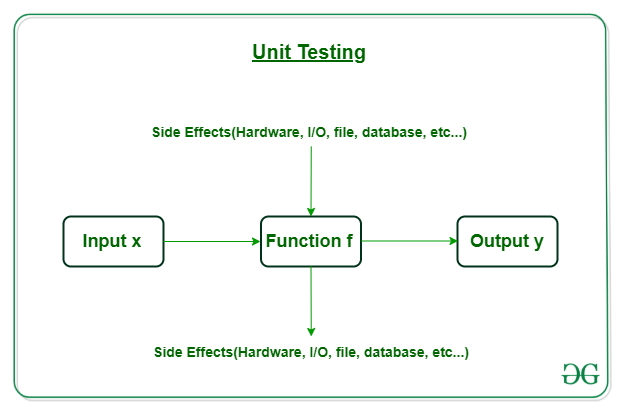Types of Unit TestingThis article will help you in providing knowledge on various types of Unit testing. Before moving on to the main topic first let us understand the concept of unit testing. What is Unit Testing?The practice of testing specific software modules or components apart from the rest of the system is known as unit testing. Unit testing is used to verify that each piece of code is functional and complies with its requirements. 
In unit testing, each unit of code is tested independently to ensure that it behaves as expected, without any dependency on other units. Unit tests typically focus on a small piece of functionality and are automated, allowing for efficient and repeatable testing. Types of Unit TestingThere are several types of unit testing, each with its own advantages and use cases. In this article, we will discuss three common types of unit testing: white-box testing, black-box testing, and gray-box testing. 1. White-box testingA testing method that concentrates on the internal organization of the code being tested is called white-box testing, often referred to as clear-box testing or structural testing . Testers who perform white-box testing have knowledge of the internal workings of the code, including the programming language, algorithms, and data structures. White-box testing is useful for detecting code defects, such as syntax errors, boundary conditions, and control flow errors. It can also help identify performance bottlenecks and scalability issues. Advantages of white-box testing include:
Disadvantages of white-box testing include:
2. Black-box testingBlack-box testing is a testing method that concentrates on the external behavior of the code being evaluated. It is sometimes referred to as functional testing or specification-based testing. Testers who perform black-box testing do not have access to the internal workings of the code, and they rely on specifications or requirements to guide their testing efforts. Black-box testing is useful for verifying that the code meets the specified functional requirements and that it behaves correctly under various conditions. It can also help identify usability and accessibility issues. Advantages of black-box testing include:
Disadvantages of black-box testing include:
3. Gray box testingIt is a technique for testing software that includes aspects of both black-box testing and white-box testing. In contrast to white box testing, gray box testing involves less knowledge of the system's inner workings by the tester. This allows for a more comprehensive testing approach than black box testing, while still maintaining some level of objectivity. Advantages of gray box testing include:
Disadvantages of gray box testing include:
This is all about various types of unit testing. Hope you understood this topic.
Next TopicWhat is Conventional Testing
|
 For Videos Join Our Youtube Channel: Join Now
For Videos Join Our Youtube Channel: Join Now
Feedback
- Send your Feedback to [email protected]
Help Others, Please Share










